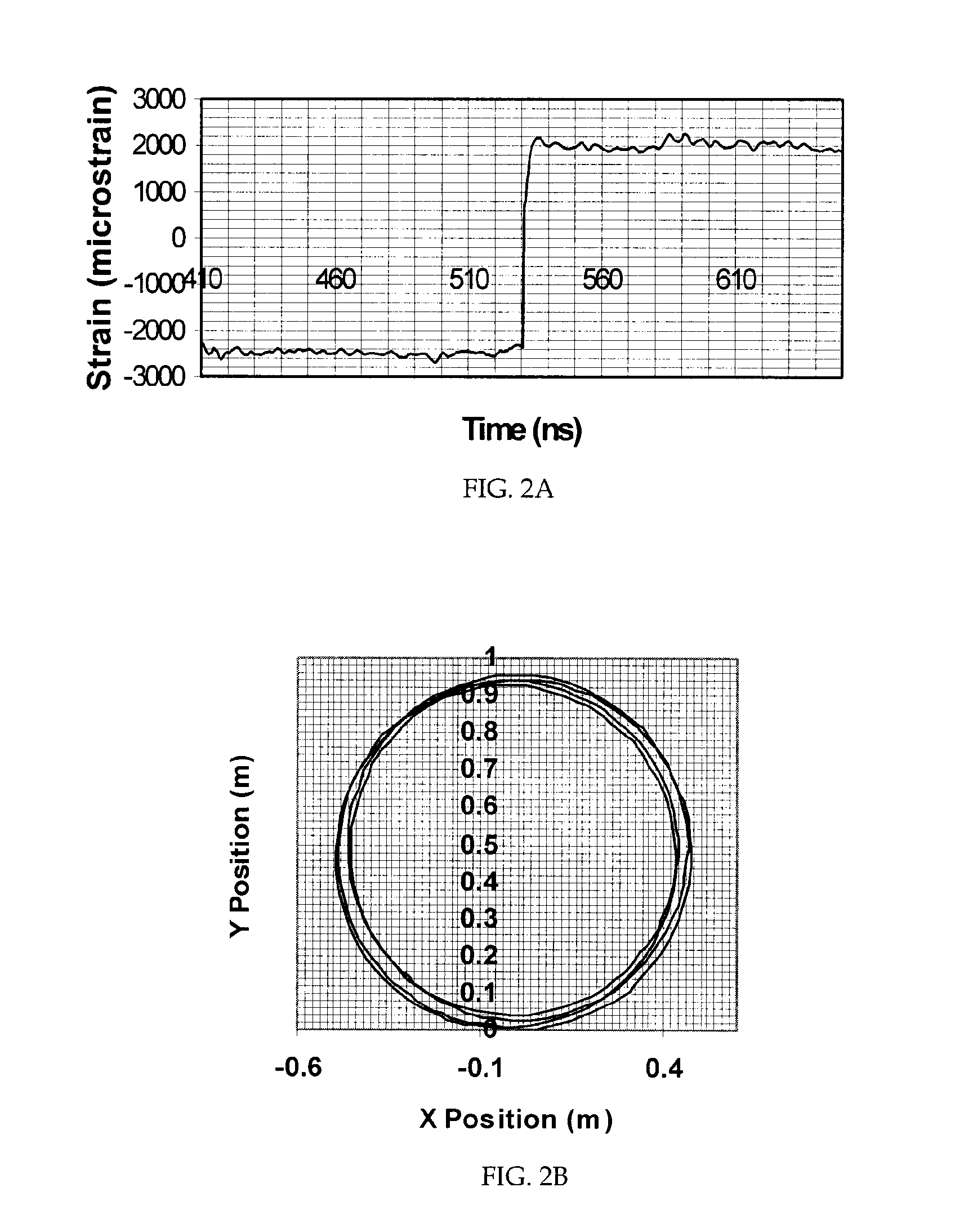Flexible fibre optic deformation sensor system and method
- Summary
- Abstract
- Description
- Claims
- Application Information
AI Technical Summary
Benefits of technology
Problems solved by technology
Method used
Image
Examples
example # 1
Example #1
[0044]A 46.15 cm radius circle was made from wrapping a 12 m steel tape onto itself. Approximately four concentric circles were wrapped one on top of the other to form the circle.
[0045]Data was gathered on the circle configuration. FIG. 2A shows the strain distribution data collected over the length of the circularly wrapped tape.
[0046]As shown in FIG. 2A, a region of compression exists from 410 ns to 530 ns (located between 41.87 m and 54.13 m along the sensing fibre), and a region of tension exists from 530 ns to 650 ns (between 54.13 m and 66.38 m). This is exactly what is expected from a circular shape, since one side of the tape will be in tension, and the opposite in compression.
[0047]FIG. 2B shows the result of the processed strain data captured from the tape. The radius of the circle was determined with a measuring tape to be 46.15 cm; the average radius of curvature as measured with the sensor was 46.065 cm. This yields a 0.184% error or 0.170 cm. The standard dev...
example # 2
Example #2
[0048]An incandescent lamp was used to heat a small portion of the tape, changing the local temperature and introducing some axial strain due to the thermal expansion of the steel. The room temperature during the experiment was 21.8° C. The temperature of the heated section varied between 50.6° C. and 53.2° C. during the data acquisition. FIG. 3A shows the difference between the tape's strain with the lamp placed on it and at room temperature. As in Example #1, the top fibre strain occurs between 410 ns and 530 ns, and the bottom fibre strain occurs between 530 ns and 650 ns. Since a shift in temperature has the same effect on the fibre Brillouin frequency as a shift in strain, periodic peaks of ‘strain’ were expected.
[0049]Periodic spikes are shown in the graph of FIG. 3A. The spikes occur, approximately, every 30 ns, or 300 cm. Just below 530 ns to 540 ns, there is a distortion representing the turn around at the end of the fibre. Given the radius of the circle is 46.15 ...
PUM
 Login to View More
Login to View More Abstract
Description
Claims
Application Information
 Login to View More
Login to View More - R&D Engineer
- R&D Manager
- IP Professional
- Industry Leading Data Capabilities
- Powerful AI technology
- Patent DNA Extraction
Browse by: Latest US Patents, China's latest patents, Technical Efficacy Thesaurus, Application Domain, Technology Topic, Popular Technical Reports.
© 2024 PatSnap. All rights reserved.Legal|Privacy policy|Modern Slavery Act Transparency Statement|Sitemap|About US| Contact US: help@patsnap.com










